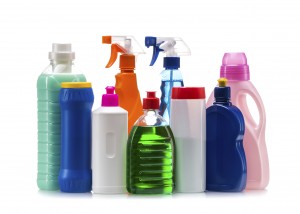 You’ve got to hand it to the Europeans. Generally speaking, they’re much better than we are here in the U.S. at looking at the big picture when it comes to the health of their citizens (rather than the health of big corporations).
You’ve got to hand it to the Europeans. Generally speaking, they’re much better than we are here in the U.S. at looking at the big picture when it comes to the health of their citizens (rather than the health of big corporations).
For instance, The National Food Institute at the Technical University of Denmark has just completed a four-year research project looking at the safety of various chemicals commonly found in foods—from pesticides to heavy metals. And researchers found that these chemicals may have an “additive effect.”
In short, they add up—and so do their negative effects. And these combinations, or “chemical cocktails,” could seriously harm health.
This finding might seem obvious. But it highlights precisely why American research is so woefully inadequate when it comes to studying nutritional science: because nutritional science works in combinations, and routinely showcases additive effects.
It’s the same with exposure to toxins: We aren’t exposed to one toxin each day but rather to 500+ toxins per day.
Unfortunately, when the “powers-that-be” in this country are assessing the potential risk associated with various toxins, they fail to take this “additive effect” into account.
Back to the study: The researchers developed a computer program and step-by-step procedure to help calculate “cocktail effects” of chemicals. They also assessed Danish dietary exposure to chemicals, and found that Danes’ exposure to pesticides through foods was relatively limited. But exposure to substances such as lead, cadmium, PCBs and dioxins needed to be reduced.
In addition, they said the endocrine-disrupting effects of chemicals had not been adequately studied. But, where some insight was available (like for phthalates and fluorinated chemicals), the results showed that exposure needed to be lowered.
The researchers concluded that there is just too much exposure in general—from chemicals like bisphenol A (BPA) in plastics to arsenic in rice.
They even went so far as to say that children should avoid eating rice cakes because their risk for arsenic toxicity is far greater because of their lower body weight. The same holds true for the mercury found in high fructose corn syrup. (Of course, you should know by now that rice cakes and high fructose corn syrup shouldn’t be anywhere NEAR your house anyway.)
Don’t get me wrong. I know it’s not realistic to tell you to avoid all toxins. But what I tell my patients (and how I live my own life) is to do it the best you can.
Some things are out of your control. But there’s plenty that is in your control.
You can start with a few simple steps:
1.) Eating fresh, whole foods (nothing from cans).
2.) Choose organic, pesticide-free fruits and vegetables.
3.) Opt for organic (or, even better, heritage) meats that aren’t raised with hormones.
4.) Make careful choices with household products. The Environmental Working Group, www.ewg.org is a valuable public resource when it comes to weeding dangerous chemicals of any kind out of your home.
And I also recommend doing regular, quarterly detoxes. They help flush the unavoidable toxins out of your body to give you a “clean slate.”
You can read about my easy detox protocol in the September 2013 issue of Logical Health Alternatives. Subscribers can access this issue for free from the Archives by visiting www.drpescatore.com and logging in with your username and password. (And if you’re not already a subscriber, the website also has all the details you need to sign up today.)
You can’t live in a bubble, but small steps could add up to a big health win.
And while we’re on the subject of toxins—keep reading to find out about the next GMO nightmare about to take supermarkets by storm…
Source:
“Food chemicals may have harmful ‘cocktail’ effect,” FoodNavigator.com, 3/27/15

